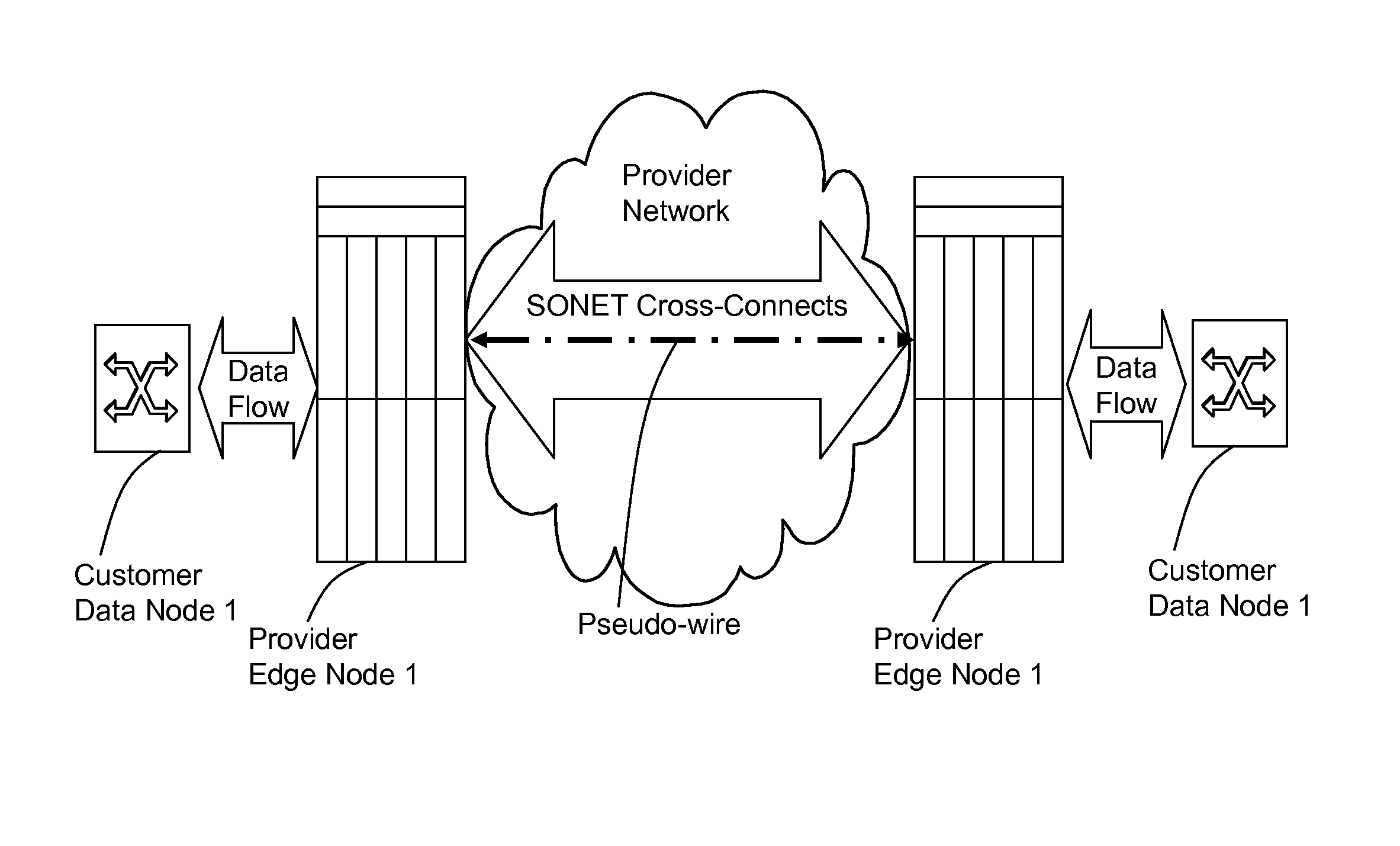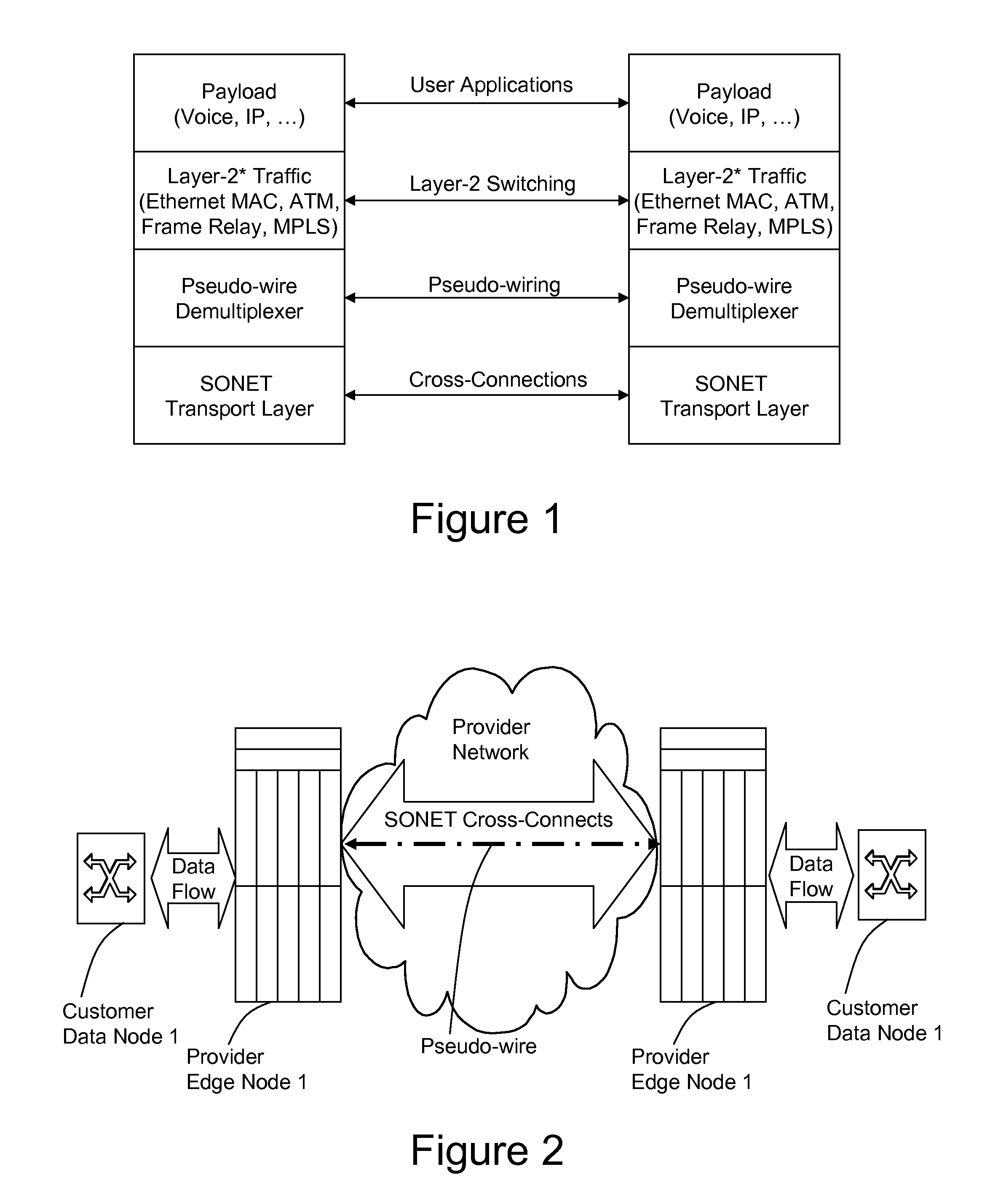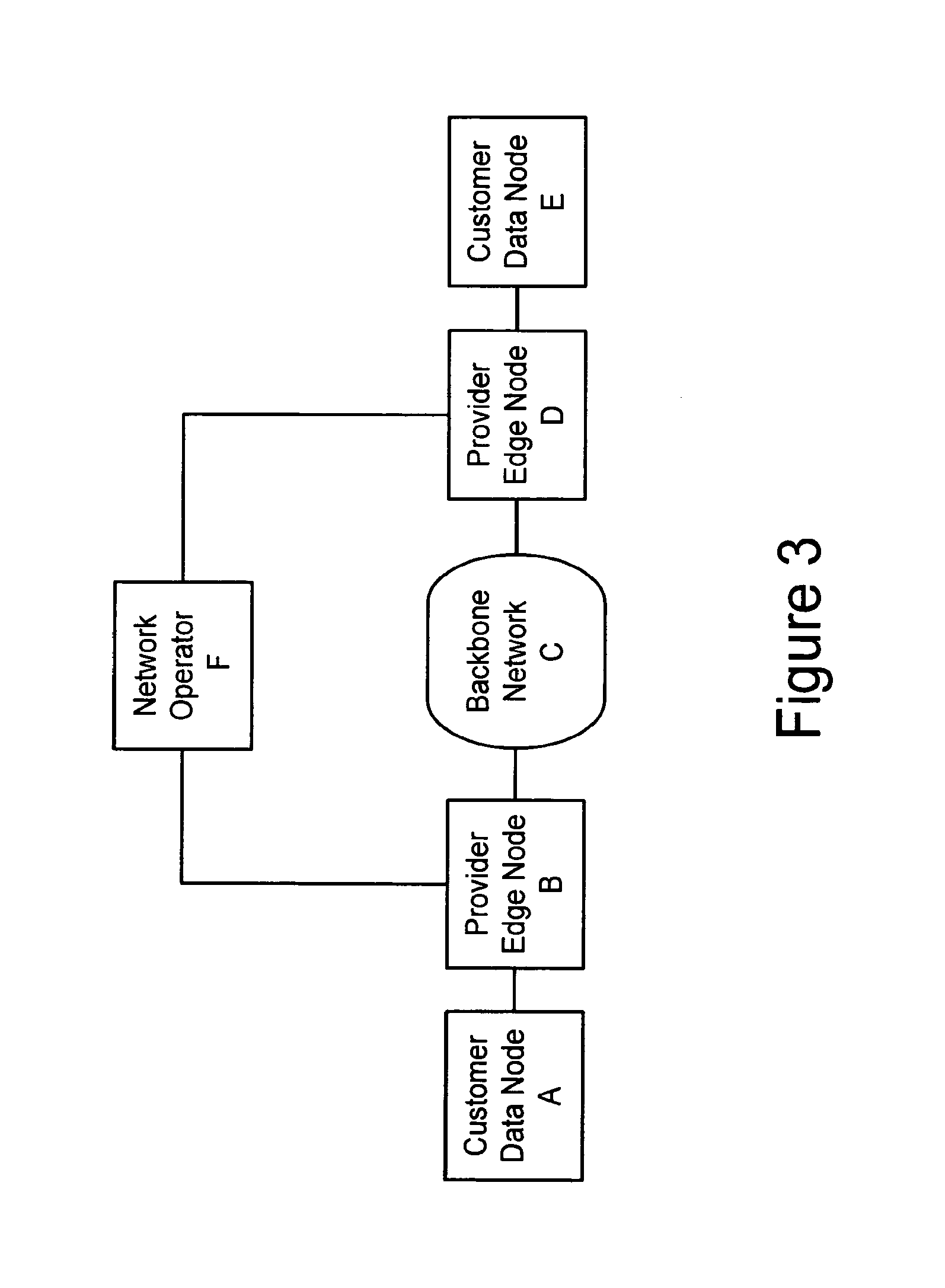Method and apparatus for performing data flow ingress/egress admission control in a provider network
a data flow and provider network technology, applied in the field of method and apparatus for performing data flow ingress/egress admission control in a provider network, can solve the problems of network utilization inefficiencies, inefficiency in utilization of circuit switched network capacity, and limited flexibility of circuit switched connection
- Summary
- Abstract
- Description
- Claims
- Application Information
AI Technical Summary
Benefits of technology
Problems solved by technology
Method used
Image
Examples
second embodiment (
Admission Control Apparatus, System and Method)
Terminology of Second Embodiment
[0250]Due to the possibility of a common environment, hardware and application, the second embodiment may use many of the same devices, processes and techniques of the first embodiment. However, it is to be noted that the second embodiment may be applied within a much broader context than the first embodiment. Specifically, the second embodiment may be applied to electrical transport networks that utilize routers and / or L2 switches. Some of the differences are pointed out below in this terminology section while specific hardware and operational differences are explained in following sections.[0251]CE: Customer Edge. This is also referred as a customer data node or customer edge node throughout this specification. The CE may be a router or a switch.[0252]PE: Provider Edge. This is a device (also referred to herein as a provider edge node) that either routes or switches traffic. In the context of the second...
second embodiment
Operation Of Second Embodiment
[0335]The following sections describe the methods and operations of the second embodiment. These methods may be performed utilizing the elements described above or their equivalents.
Provisioning Pseudo Wires for Admission Control
[0336]This section describes the inventive method of provisioning pseudo-wires that permit admission control functionality. Following sections will describe both pseudo-wire shuffling and preemption according to the inventive concepts.
[0337]The provisioning of pseudo wires that will permit admission control functionality to operate is a process that includes the exchanging of specific resource information between PE nodes during the creation of pseudo-wires.
[0338]Setting up pseudo-wires (PW) may follow a procedure as defined in [PWE3-CTRL] or the procedure as defined above in the first embodiment. The second embodiment, however, modifies these provisioning processes to operate in context of and to otherwise permit admission cont...
third embodiment
[0389]The invention also includes a third embodiment that is generally directed to pseudo-wire probing. The pseudo-wire probing feature allows the network operators to actively detect the aliveness of pseudo-wires from network edge.
[0390]The general concept is derived from LSP-ping [LSP-PING], which supports both RSVP-TE and LDP. All probing packets may use UDP (port 3503).
[0391]The existing LSP-ping is to “ping” at the FEC level. The processing procedure can be very complex due to LSP merging among nodes inside the network. Worse, for load-balanced traffic, the LSP-ping cannot probe the intended path accurately.
[0392]To probe pseudo-wires, the invention modifies the scope of the conventional protocol and simplifies the implementation. The invention essentially probes edge-to-edge, point-to-point connections. For example, instead of “pinging” at FEC level, the invention will “ping” per VCID (that is, per pseudo-wire).
[0393]Since each pseudo-wire is always strictly a point-to-point c...
PUM
 Login to View More
Login to View More Abstract
Description
Claims
Application Information
 Login to View More
Login to View More - R&D
- Intellectual Property
- Life Sciences
- Materials
- Tech Scout
- Unparalleled Data Quality
- Higher Quality Content
- 60% Fewer Hallucinations
Browse by: Latest US Patents, China's latest patents, Technical Efficacy Thesaurus, Application Domain, Technology Topic, Popular Technical Reports.
© 2025 PatSnap. All rights reserved.Legal|Privacy policy|Modern Slavery Act Transparency Statement|Sitemap|About US| Contact US: help@patsnap.com



